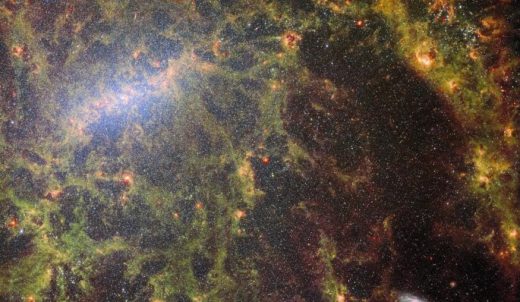Europe’s Euclid space telescope launches to map the dark universe
Latest Webb Telescope images gives a look at stars being born in the Virgo constellation

It seems like every few weeks, NASA, the European Space Agency (ESA) and the Canadian Space Agency (CSA) drop an impressive image from the James Webb Space Telescope that is both stunning to behold and advances our knowledge of the universe. The latest is of the barred spiral galaxy NGC 5068, called a “barred” galaxy because of the bright central bar you can see in the upper left of the above image. It’s a combination image consisting of infrared shots taken from the telescope’s MIRI (Mid-Infrared Instrument) and NIRCam (Near-Infrared Camera) sensors.
What those sensors captured is a galaxy in the Virgo constellation about 20 million light-years from Earth, and because the JWST can see through the dust and gas that surrounds stars as they’re born, the instrument is particularly suited to producing images that show the process of star formation.
Looking at the two individual images that make up the composite reveals different layers of the galaxy. As Gizmodo notes, the image produced by the MIRI sensor provides a view of the galaxy’s structure and the glowing gas bubbles that represent newly formed stars.
The second image, taken from the NIRCam, put the focus on a huge swath of stars in the foreground. The composite, meanwhile, shows both the enormous amount of stars in the region as well as the highlights of the stars that have just been “born.”

There isn’t one specific breakthrough finding in this image; instead, NASA notes that this is part of a wider effort to collect as many images of star formation from nearby galaxies as it can. (No, 20 million light-years doesn’t exactly feel nearby to me, either, but that’s how things go in space.) NASA pointed to another few images as other “gems” from its collection of star births, including this impressive “Phantom Galaxy” that was shown off last summer. As for what the agency hopes to learn? Simply that star formation “underpins so many fields in astronomy, from the physics of the tenuous plasma that lies between stars to the evolution of entire galaxies.” NASA goes on to say that it hopes the data being gathered of galaxies like NGC 5068 can help to “kick-start” major scientific advances, though what those might be remains a mystery.
(13)


